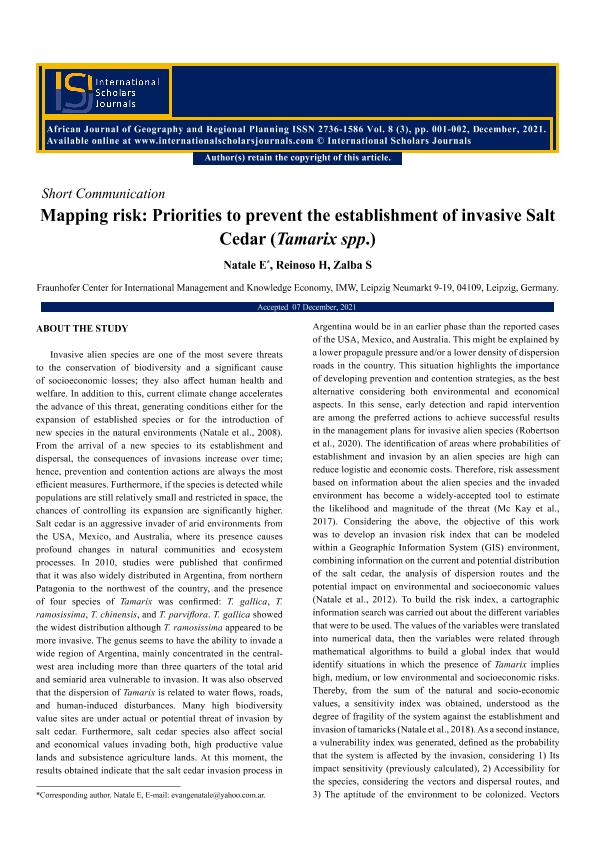Artículo
Mapping risk: Priorities to prevent the establishment of invasive Salt Cedar (Tamarix spp.)
Fecha de publicación:
21/02/2022
Editorial:
International Scholars Journals
Revista:
African Journal of Geography and Regional Planning
e-ISSN:
2736-1586
Idioma:
Inglés
Tipo de recurso:
Artículo publicado
Clasificación temática:
Resumen
Early detection and rapid intervention are among the preferred actions to achieve successful results in the management plans for invasive alien species. The identification of areas where probabilities of establishment and invasion by an alien species are high can reduce logistic and economic costs. Risk assessment based on information about the alien species and the invaded environment has become a widely-accepted tool to estimate the likelihood and magnitude of the threat. The objective of this work was to develop an invasion risk index that can be modeled within a geographic information system (GIS) environment, combining information on the current and potential distribution of the alien species, the analysis of dispersion routes and the potential impact on environmental and socioeconomic values. The genus Tamarix was used as a case study. This genus is widely distributed in Argentina, from northern Patagonia to the northwest of the country. A risk index was obtained, with potential to be expressed cartographically in a GIS. The relevance of the developed index is that it might be extended and applied to different invasive species, regions and working scales.
Palabras clave:
CONSERVACION
,
BIODIVERSIDAD
,
RISK ANALYSIS
Archivos asociados
Licencia
Identificadores
Colecciones
Articulos (ICBIA)
Articulos de INSTITUTO DE CIENCIAS DE LA TIERRA, BIODIVERSIDAD Y AMBIENTE
Articulos de INSTITUTO DE CIENCIAS DE LA TIERRA, BIODIVERSIDAD Y AMBIENTE
Citación
Natale, Evangelina Sandra; Reinoso, Herminda Elmira; Zalba, Sergio Martín; Mapping risk: Priorities to prevent the establishment of invasive Salt Cedar (Tamarix spp.); International Scholars Journals; African Journal of Geography and Regional Planning; 8; 3; 21-2-2022; 1-2
Compartir




